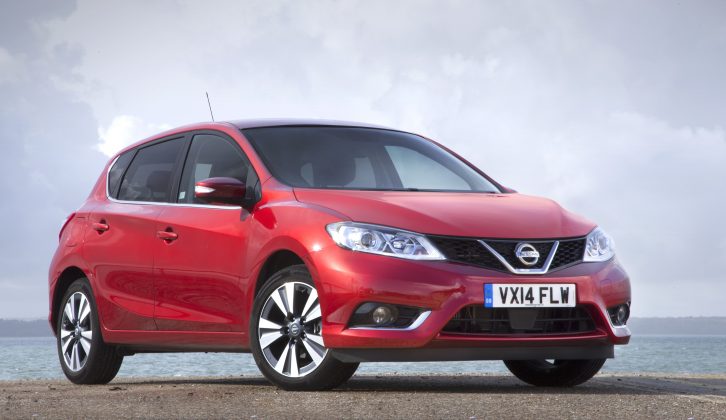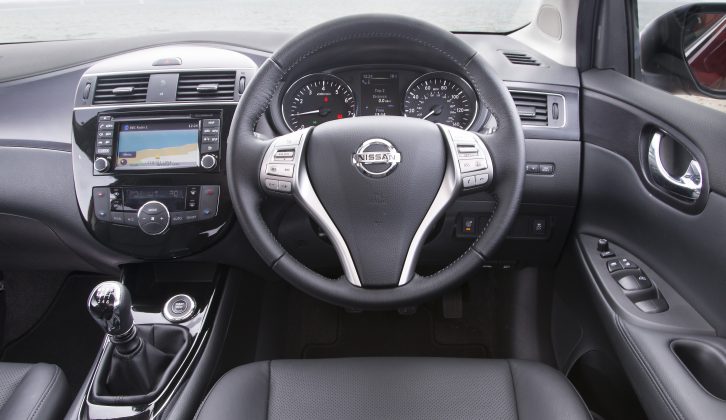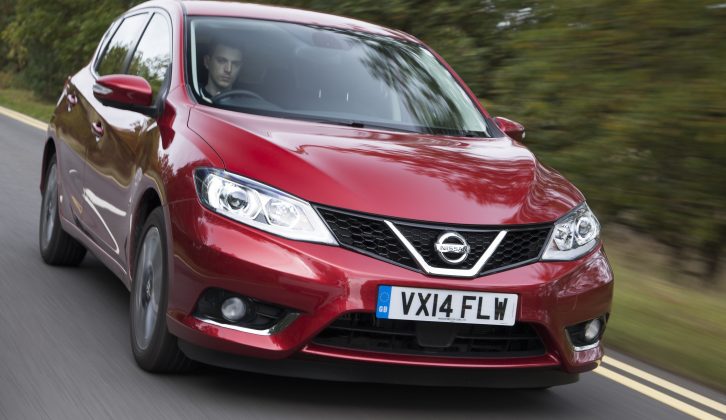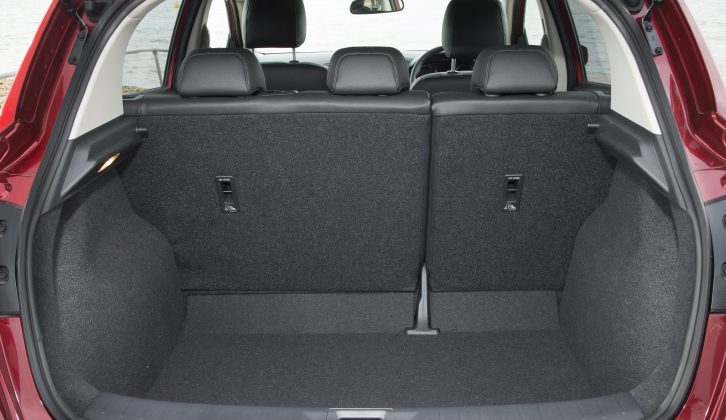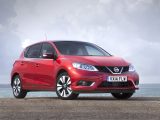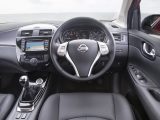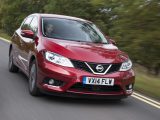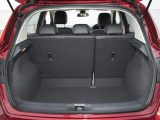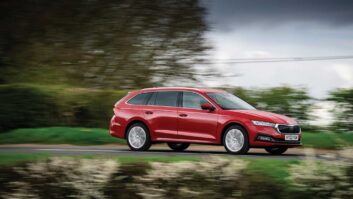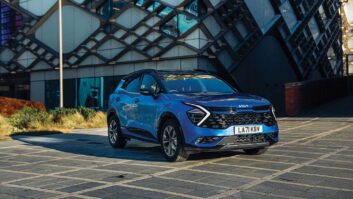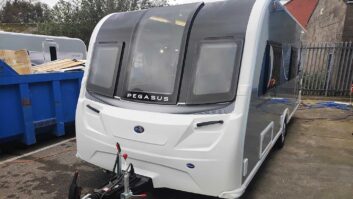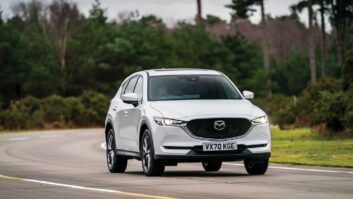Nissan has sprung to prominence of late, thanks at least in part to its popular Qashqai’s victory at our 2014 Tow Car Awards, cementing the Japanese manufacturer’s place in the consciousness of many caravanners. And it’s not just us who’s praised the Nissan Qashqai – it’s also What Car?’s Car of the Year 2014.
All of which meant that when we learnt of Nissan’s return to the C-segment after an absence of seven years with the launch of the all new Pulsar, we were intrigued to get behind the wheel and discover what tow car potential this new family hatchback has.
Starting with the subjective matter of aesthetics, the new Nissan Pulsar is a good looking car. Its appearance may not be much to get too excited about, but at the same time there’s nothing to complain about either. Its appearance is clean and unfussy.
Get inside and things improve. The Pulsar has a 2700mm wheelbase that, Nissan tells us, is the longest in its class, bringing benefits in terms of cabin space. This is immediately apparent upon entry. Up front you’ll find a pair of supportive seats in which you’ll have ample knee, elbow and legroom, while those in the rear will enjoy class leading legroom – indeed, the Pulsar’s 692mm betters the average legroom of cars in the segment above.
There is also little to grumble about when it comes to boot space, the Pulsar’s 385-litre capacity accessed via a wide aperture. Need more? The split folding rear seats are easy to flip forward, forming a (nearly) flat load space that boosts volume to 1,395 litres.
Our test car was a top spec Tekna model, meaning its standard kit list includes LED headlights and a raft of safety features such as Forward Emergency Braking and Lane Departure Warning. Visia is the entry-level trim, Acenta the next level, followed by n-tec and, finally, Tekna. However, it’s good to know that all Pulsars have air-con, Bluetooth, steering wheel mounted controls, alloy wheels, electric windows all round, six airbags and Nissan’s start-stop system as standard.
It’s worth noting too that there’s a very smart feel to this car’s cabin. While there’s nothing here to worry prestige brands, the mix of black gloss trim elements with matt black details together with the intuitive to use, well damped switchgear combine to create a pleasingly polished space. I got the feeling it would stand up well to wear and tear, and that the seats would be comfortable over long journeys on your caravan holidays.
Onto the nitty-gritty. At launch, the Nissan Pulsar comes with either a 1.2-litre petrol engine or a 1.5-litre diesel, both four-cylinder units. The former gives you 113bhp and 140lb ft torque sent to the front wheels via a six-speed manual. You can also order the 1.2-litre petrol with an automatic transmission, but you’ll lose out when it comes to torque, this figure dropping to 122lb ft with the auto, albeit delivered a little lower in the rev range.
We’ve driven the 108bhp/192lb ft torque diesel, which comes only with the six-speed manual. As well as having more grunt on paper, this is surely the best option for caravanners as it is also the heaviest in the range.
Nissan quotes a minimum and maximum kerbweight for the Pulsar, which depends on the model and the equipment fitted. And this figure doesn’t include 75kg for the driver, as allowed by the current EU standard. So, working from the minimum kerbweight for the model tested, but adding 75kg for the driver, gives a figure of 1382kg. That in return gives an 85% match figure, as usually recommended for safe and stable towing, of 1175kg, which is just within the legal towing limit of 1200kg.
Onto economy and, perhaps unsurprisingly, the diesel is the more efficient variant, according to official figures. Nissan claims it can achieve 78.5mpg on the combined cycle and that it emits just 94g/km of CO2.
We’ve only driven the new Nissan Pulsar solo, but found there’s a lot to like. Body roll through corners, wind noise and road noise are all low. It also rides smoothly and steers cleanly, and as the clutch is not at all heavy and the gearlever is light and easy to move, you won’t tire quickly on long drives. Refined it is, exciting it is not.
The same can be said for the 1461cc engine. You’ll be pleased to learn that although there’s no doubting it’s a diesel, its voice doesn’t intrude much on the cabin and there are no unpleasant vibrations. Once warm, you’re only really aware of it under load. There’s sufficient overtaking urge, although we’d not be surprised if you doubt it – there’s no punch or drama to the diesel Pulsar’s full throttle acceleration, but it does the job.
Taking on the likes of the Ford Focus and the Kia Cee’d is no mean feat, but the lure of the potentially very lucrative C-segment was too much for Nissan to resist. With its smart, well specced, spacious cabin and easy drive, not to mention the range’s £15,995 OTR starting point, it is hard to bet against Nissan taking a chunk out of rivals’ sales, following its success with the Qashqai in recent years.
Those in the rear will enjoy class leading legroom
